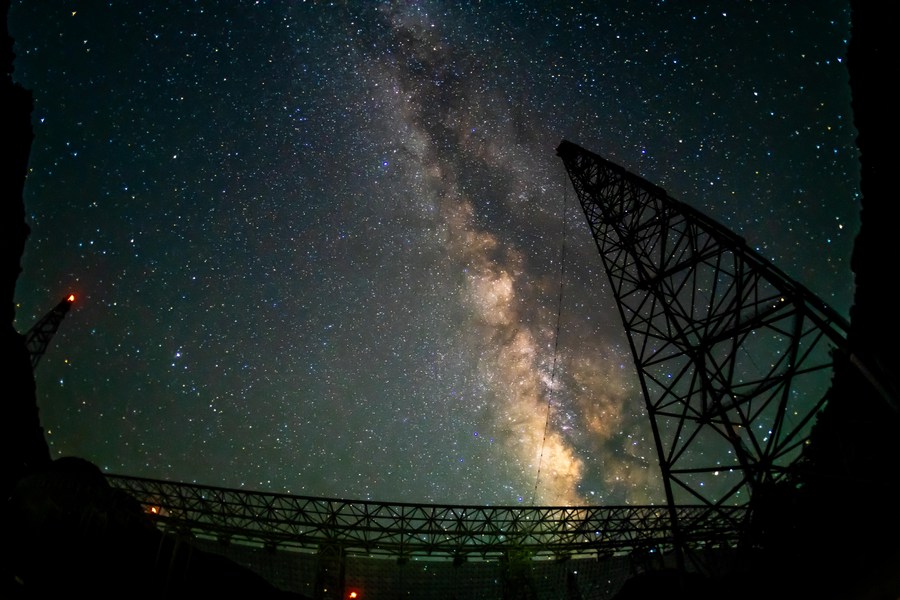China's FAST telescope films magnetic fields nearby fast radio burst
 0 Comment(s)
0 Comment(s) Print
Print E-mail Xinhua, September 23, 2022
E-mail Xinhua, September 23, 2022

Using the Five-hundred-meter Aperture Spherical Radio Telescope (FAST), or the "China Sky Eye," an international group filmed, for the first time, the magnetic ebb and flow nearby of a fast radio burst from out of the Milky Way.
Fast radio bursts (FRBs) are the brightest, highly-dispersed millisecond-duration astronomical transients in radio bands with yet unknown origins.
Chinese and U.S. astronomers led by those from the National Astronomical Observatories under the Chinese Academy of Sciences, reported the detection of 1,863 bursts in 82 hours over 54 days from the repeating source FRB 20201124A.
Those observations revealed a complicated, dynamically evolving, magnetized immediate environment within about an astronomical unit (or distance between Earth and the Sun) of the radio source, according to the study published in the journal, Nature, on Wednesday.
The scientists found for the first time that the Faraday rotation measure, an indicator for the magnetic field strength, jolted irregularly in the first 36 days, followed by an 18-day stability.
The findings showed that the vibrant, fast radio burst had quenched within 72 hours, a phenomenon previously undetected.
Then, they used the Keck Telescope in Hawaii to observe its Milky-Way-sized, metal-rich host galaxy.
The galaxy is a barred spiral with the FRB source residing in a low-stellar-density region between two arms, which is at an intermediate distance from the galactic center, according to the study.
Some recent observations of a fast radio burst within the Milky Way suggested that at least some FRBs originate from magnetars.
But the results in this study showed that the repeating source FRB 20201124A is unlikely to be a young magnetar engine formed during an extreme explosion of a massive star that resulted in a long gamma-ray burst or superluminous supernova, bringing more complexity to the origin of FRBs.
Located in a naturally deep and round karst depression in southwest China's Guizhou Province, FAST started formal operation in January 2020 and officially opened to the world on March 31, 2021. It is believed to be the world's most sensitive radio telescope.






Go to Forum >>0 Comment(s)